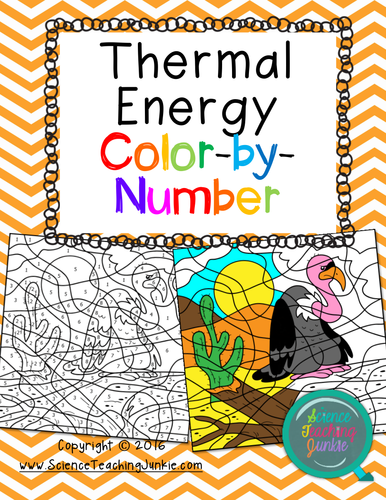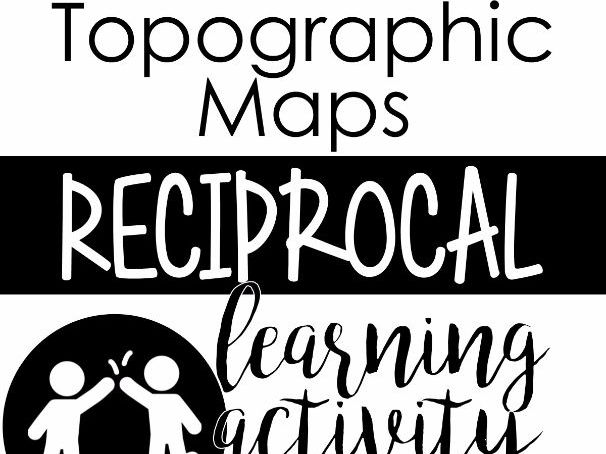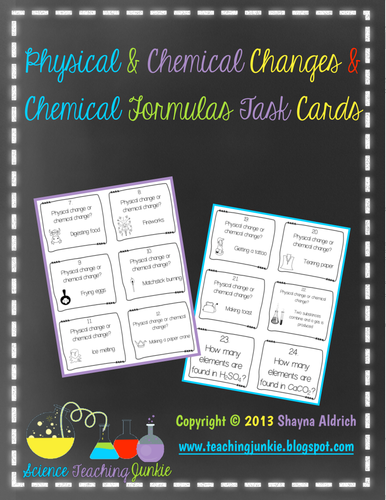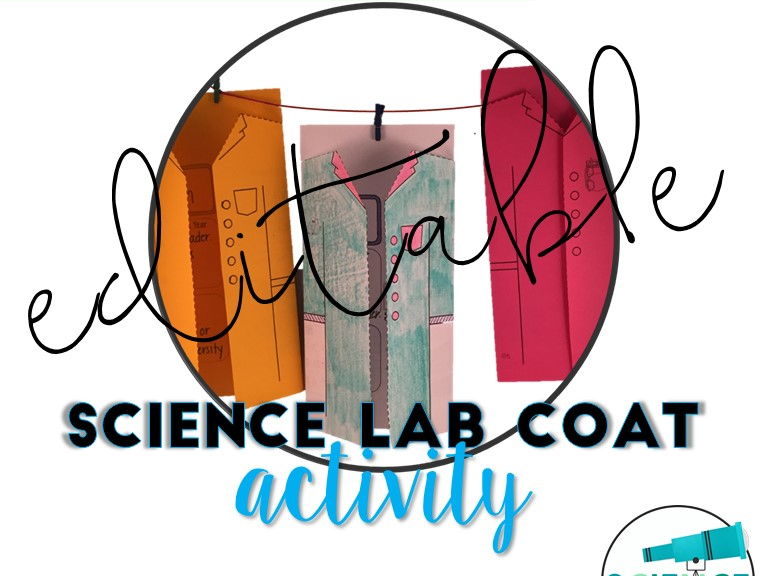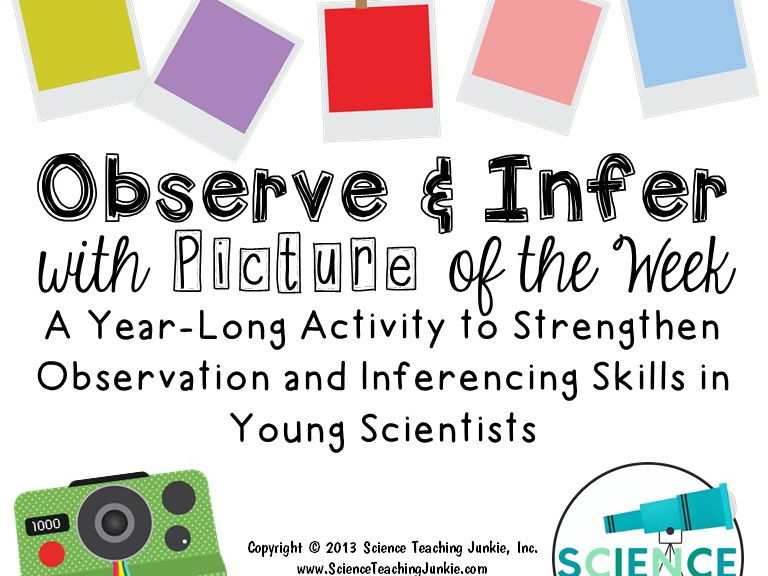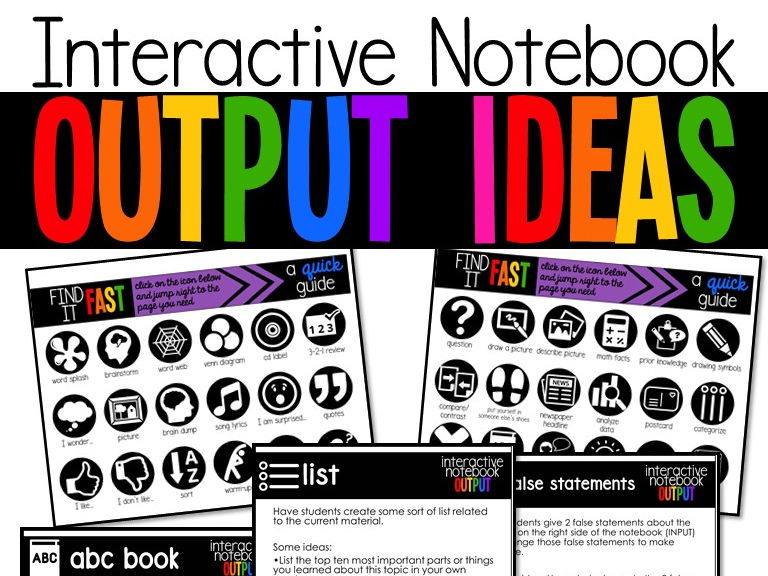
52Uploads
33k+Views
941Downloads
All resources

Thermal Energy: Methods of Heat Transfer Color-by-Number TEKS 6.9A & TEKS 6.9B
This product is a color-by-number activity that allows students to answer various questions relating to the 3 methods of heat transfer (conduction, convection, and radiation). And YES- even secondary students love to color!
This product is great for assessing the following standards:
TEKS 6.9A Investigate methods of thermal energy transfer, including conduction, convection, and radiation.
TEKS 6.9B Verify through investigations that thermal energy moves in a predictable pattern from warmer to cooler until all the substances attain the same temperature such as an ice cube melting.
There are 8 different questions with 3 possible answer choices each. Each answer choice corresponds to a different color. If all of the correct answer choices are chosen, then their final picture will be colored correctly to reflect complete mastery of the content.
To be successful with this activity, students should be able to:
•understand the 3 methods of thermal energy transfer: conduction, convection, and radiation
•know the predictable pattern in which heat travels (from warmer to cooler until all substances attain the same temperature)
This could be used as a quick assessment, a homework assignment, additional practice, extra credit, or for early finishers. These are also great for days when you have to be out of the classroom - a sub can easily take over this lesson!
If you like this activity,
©2016 Science Teaching Junkie, Inc. Terms of Use - this resource is for use by one teacher only. Additional teachers must purchase their own license. If you are interested in purchasing several licenses, please contact me for a district-wide or campus-wide quote. This product should NOT be posted on any website. ScienceTeachingJunkie@yahoo.com

Speed, Velocity, & Acceleration Task Cards
This PDF includes 36 task cards to help students demonstrate mastery on differentiating between speed, velocity and acceleration. Student answer sheets and teacher answer key are provided. Ideas on ways to use them in the science classroom are also included.
For students to be successful with utilizing these cards, they should have prior knowledge of the following concepts and/or vocabulary:
- speed (distance/time)
- velocity (speed in a direction)
- acceleration (change in speed and/or direction)
- distance vs. time on a graph (speed represented graphically)
- calculating speed (and average speed)
- calculating velocity
- forces cause an object to accelerate
- forces that may cause a moving object to slow, such as friction
- reading a graph
© Science Teaching Junkie, Inc. Terms of Use - this resource is for use by one teacher only. Additional teachers must purchase their own license. If you are interested in purchasing several licenses, please contact me for a district-wide or campus-wide quote. This product should NOT be posted on any website. ScienceTeachingJunkie@yahoo.com

Atoms and the Periodic Table Task Cards
This PDF includes 36 task cards over atoms and the periodic table. Student answer sheets and teacher answer key are provided. Ideas on ways to use them in the science classroom are also included.
For students to be successful with utilizing these cards, they should have prior knowledge of the following concepts and/or vocabulary:
- atomic structure (location and charges of protons, neutrons, and electrons)
- group/family names on the periodic table
- identifying group/period numbers on the periodic table
- reactivity patterns on the periodic table
- that elements in the same group have similar chemical properties
- elements in the same period have the same number of energy levels
- elements in the same group have the same number of valence electrons
- location of metals, nonmetals, and metalloids
- protons determine the identify of the element
- how to calculate the number of neutrons
- why elements in the Noble Gas family are considered nonreactive or inert
- identify an element by seeing a Bohr Model of the atom
Buy the Bundle and Save! Buy the Bundle and receive all future task card set additions, revisions and updates at no additional cost to you!
© Science Teaching Junkie, Inc. Terms of Use - this resource is for use by one teacher only. Additional teachers must purchase their own license. If you are interested in purchasing several licenses, please contact me for a district-wide or campus-wide quote. This product should NOT be posted on any website. ScienceTeachingJunkie@yahoo.com

Calculating Work Task Cards
This PDF includes 32 task cards that allow teachers to assess their students' knowledge of calculating work and recognizing that simple machines make work easier (please see the extensive list of content that is covered below). A student answer sheet and teacher answer key are provided. An editable task card is included so that you can add your own task card question or task.
The following content/topics are included:
•definition of work
•recognizing that in order for work to be done, the object must move in the direction of the force applied
•calculating work when given the work equation
•simple machines make work easier, but they do not decrease the total amount of work
•the effect of distance increasing and force decreasing
•spring scale is the tool used to measure force
•using data tables to determine people who are performing the same amount of work
•examples of work being done
•definitions for force, distance, work, Joule (or Newton-meter)
•how a simple machine, such as an inclined plane (ramp on a moving truck), effects work and the amount of force needed to move a box into the truck
© Science Teaching Junkie, Inc. Terms of Use - this resource is for use by one teacher only. Additional teachers must purchase their own license. If you are interested in purchasing several licenses, please contact me for a district-wide or campus-wide quote. This product should NOT be posted on any website. ScienceTeachingJunkie@yahoo.com

Organisms and Environments Task Cards
This PDF includes 32 task cards to help students demonstrate mastery on organisms and environments. Student answer sheets and teacher answer key are provided. Ideas on ways to use them in the science classroom are also included.
For students to be successful with utilizing these cards, they should have prior knowledge of the following concepts and/or vocabulary:
- food chains, food webs and energy pyramids
- consumer (heterotroph)
- producer (autotroph)
- impact of introducing an organism to an existing ecosystem or removal of an organism
- amount of energy available at each level of an energy pyramid
- primary consumer, secondary consumer, carnivores, herbivores, omnivores, decomposers, parasite, host, predator, prey
- photosynthesis
- biotic and abiotic factors
- symbiotic relationships (parasitism, mutualism, commensalism)
- competition
- limiting factors
- how human activities, such as artificial reefs, have modified ocean systems
- comparing a food web to a cycle
- effects of short-term and long-term environmental changes
© Science Teaching Junkie, Inc. Terms of Use - this resource is for use by one teacher only. Additional teachers must purchase their own license. If you are interested in purchasing several licenses, please contact me for a district-wide or campus-wide quote. This product should NOT be posted on any website. ScienceTeachingJunkie@yahoo.com

Newton's Laws Reciprocal Learning Activity
This reciprocal learning activity gives students the opportunity to practice demonstrating and calculating how unbalanced forces cause the motion of an object to change, determining the net force in a force diagram, describing applications of Newton's three laws of motion, identifying the action and reaction force, and calculating force, mass, and acceleration.
What is the Reciprocal Learning Strategy?
Reciprocal Learning is a student-pairing strategy designed with the principles of effective coaching in mind. Each pair of students forms a learning partnership committed to helping each other reach a particular learning goal. Each student plays two roles: as the player, each student works to complete an activity or solve a problem while “thinking out loud”; as a coach, each student observes the player’s work and listens to the player’s thinking while providing praise, feedback, and clues that help the player complete the activity. Because of these dual-roles, the power of learning is effectively doubled.
In this activity, each player is given 14 unique problems to solve as their coach guides, encourages, and provides support when needed. After these 14 problems are completed (and correct), the students switch roles and the second player solves 14 different problems as the other player coaches.
To see a quick overview of this teaching strategy,
©2016 Science Teaching Junkie, Inc. Terms of Use - this resource is for use by one teacher only. Additional teachers must purchase their own license. If you are interested in purchasing several licenses, please contact me for a district-wide or campus-wide quote. This product should NOT be posted on any website. ScienceTeachingJunkie@yahoo.com

Topographic Maps Reciprocal Learning Activity
This reciprocal learning activity gives students the opportunity to practice interpreting topographic maps. Each student in the partnership will have the chance to identify the contour interval, determine changes in elevation, distinguish between steep and gentle slopes, determine elevations of given points, identify common features found on maps, and much more!
What is the Reciprocal Learning Strategy?
Reciprocal Learning is a student-pairing strategy designed with the principles of effective coaching in mind. Each pair of students forms a learning partnership committed to helping each other reach a particular learning goal. Each student plays two roles: as the player, each student works to complete an activity or solve a problem while “thinking out loud”; as a coach, each student observes the player’s work and listens to the player’s thinking while providing praise, feedback, and clues that help the player complete the activity. Because of these dual-roles, the power of learning is effectively doubled.
In this activity, each player is given 10 unique problems to solve as their coach guides, encourages, and provides support when needed. After these 10 problems are completed (and correct), the students switch roles and the second player solves 10 different problems (with a different map) as the other player coaches.
To see a quick overview of this teaching strategy,
©2016 Science Teaching Junkie, Inc. Terms of Use - this resource is for use by one teacher only. Additional teachers must purchase their own license. If you are interested in purchasing several licenses, please contact me for a district-wide or campus-wide quote. This product should NOT be posted on any website. ScienceTeachingJunkie@yahoo.com

Reuniting Pangaea- Continental Drift Lesson
In this 2 part-lesson, students will collect data on fossil evidence and create their own landmass map with various colors to represent the locations of fossil discoveries. Then, they will cut out the landmasses and reassemble them logically to create a giant supercontinent (Pangaea). Students will share their decision and reasoning on the evidence with their group or partner, along with answering 4 conclusion questions.
The teacher will post the correct landmass model key and students will glue their Pangaea into their science notebook.
On Day 2, the teacher will read a passage on Alfred Wegener. Students will receive 10 sentence strips from the teacher and will use context clues to sequence the strips to create a timeline representing the historical development of the plate tectonic theory. At this point, the class can have a gallery walk and discuss the event sequence (optional).
The lesson will conclude with students answering conclusion questions over the 2-day lesson and writing a summary in their science notebook describing the historical evidence that supports the plate tectonic theory.

Forces that Change the Earth Task Cards
This PDF includes 40 task cards (and 2 blank, editable PDF cards) to help students demonstrate mastery on various forces that shape the Earth. Student answer sheets and teacher answer key are provided. Ideas on ways to use them in the science classroom are also included.
For students to be successful with utilizing these cards, they should have prior knowledge of the following concepts and/or vocabulary:
- 3 plate boundaries (divergent, transform, convergent) and the effects of their movements
- continental crust vs. oceanic crust
- layers of the Earth (with basic facts)
- Theory of Continental Drift
- Theory of Plate Tectonics
© Science Teaching Junkie, Inc. Terms of Use - this resource is for use by one teacher only. Additional teachers must purchase their own license. If you are interested in purchasing several licenses, please contact me for a district-wide or campus-wide quote. This product should NOT be posted on any website. ScienceTeachingJunkie@yahoo.com

Chemical/Physical Changes & Chemical Formulas Task Cards
This PDF includes 36 task cards over chemical/physical changes and basic chemical formulas. Student answer sheets and teacher answer key are provided. Ideas on ways to use them in the science classroom are also included.
For students to be successful with utilizing these cards, they should have prior knowledge of the following concepts and/or vocabulary:
- evidence and definitions of chemical and physical changes
- distinguishing between elements and compounds on the most basic level
- counting atoms in a chemical formula
- counting the number of elements in a chemical formula
- the basic structure of a chemical equation
- subscript
- coefficient
© Science Teaching Junkie, Inc. Terms of Use - this resource is for use by one teacher only. Additional teachers must purchase their own license. If you are interested in purchasing several licenses, please contact me for a district-wide or campus-wide quote. This product should NOT be posted on any website. ScienceTeachingJunkie@yahoo.com

Moon Phases Reciprocal Learning Activity
This reciprocal learning activity gives students the opportunity to practice identifying and predicting moon phases. It also includes some information on the positions of the Sun and moon as they effect tides. The product also includes some bonus material that students can use prior to this activity to make sure they are comfortable and familiar with the moon phases when the Sun is located on the right side of the diagram and the left side of the diagram.
What is the Reciprocal Learning Strategy?
Reciprocal Learning is a student-pairing strategy designed with the principles of effective coaching in mind. Each pair of students forms a learning partnership committed to helping each other reach a particular learning goal. Each student plays two roles: as the player, each student works to complete an activity or solve a problem while “thinking out loud”; as a coach, each student observes the player’s work and listens to the player’s thinking while providing praise, feedback, and clues that help the player complete the activity. Because of these dual-roles, the power of learning is effectively doubled.
In this activity, each player is given 12 unique problems to solve as their coach guides, encourages, and provides support when needed. After these 12 problems are completed (and correct), the students switch roles and the second player solves 12 different problems as the other player coaches.
To see a quick overview of this teaching strategy,
©2017 Science Teaching Junkie, Inc. Terms of Use - this resource is for use by one teacher only. Additional teachers must purchase their own license. If you are interested in purchasing several licenses, please contact me for a district-wide or campus-wide quote. This product should NOT be posted on any website. ScienceTeachingJunkie@yahoo.com

Stars, Galaxies and the EM Spectrum Task Cards
This PDF includes 36 task cards to help students demonstrate mastery on stars, galaxies and the electromagnetic spectrum. Two of the cards have been left blank so that you can add your own questions to the existing set. Student answer sheets and teacher answer key are provided. Ideas on ways to use them in the science classroom are also included.
For students to be successful with utilizing these cards, they should have prior knowledge of the following concepts and/or vocabulary:
- star life cycle
- nebulas
- light-years
- basic parts of a wave (crest, trough, wavelength, amplitude, frequency)
- types of galaxies (spiral, irregular, and elliptical)
- H-R Diagram
- magnitude
- star color in relation to temperature
- relative sizes (Earth, solar system, galaxy, universe)
- EM Spectrum
© Science Teaching Junkie, Inc. Terms of Use - this resource is for use by one teacher only. Additional teachers must purchase their own license. If you are interested in purchasing several licenses, please contact me for a district-wide or campus-wide quote. This product should NOT be posted on any website. ScienceTeachingJunkie@yahoo.com

General Classroom Supplies and Science Lab Materials Mini Posters
In this 40 page product, you will receive 112 mini posters in two different sizes (each poster comes in a 2" square and a 3.5" square). They are great for organizing your classroom and/or science storage room. The consistent, colorful design and clear text make finding supplies a breeze.
Ideas for other uses:
★could be used to display the materials students will need for a particular lesson (works great with low-level readers and English Language Learners)
★word wall terms for science tools and lab equipment
★post all of the lab tools that your scientists will need to know so that they are always visible
★tape to the front of plastic tubs or milk crates to get a quick visual on the contents inside
Poster Terms included:
◑Binder clips
◑Brads
◑Colored pencils
◑Composition notebooks
◑Calculators
◑Clipboards
◑Crayons
◑Dry erase markers
◑Glue
◑Headphones
◑Legos and Pop Cubes
◑Lined paper
◑Highlighters
◑Flair pens
◑Masking tape
◑Markers
◑Paper clips
◑Push pins
◑Scissors
◑Scotch tape
◑Pencils
◑Notebooks
◑Sharpeners and Erasers
◑Rulers
◑Discs
◑Sports balls
◑Bandaids
◑Movies
◑Washi tape
◑iPads
◑Goggles
◑Bulletin boards and banners
◑Dominoes
◑Dice
◑Envelopes
◑Puzzles
◑Glitter
◑Playing cards
◑Toy cars
◑Manila envelopes
◑Bubbloes
◑Balloons
◑Funnels
◑Forceps
◑Buttons
◑Tools
◑Bunsen burners
◑Spring scales
◑Styrofoam cups
◑Hair dryers
◑Springs
◑Chemicals
◑Straws
◑Yarn
◑Rocks
◑Prisms
◑Toothpicks
◑Droppers
◑Anemometers
◑Flashlights
◑Light bulbs
◑Wood blocks
◑Aluminum foil
◑Corks
◑Thermometers
◑Test tube racks
◑Test tubes
◑Tongs
◑Triple beam balances
◑Metersticks
◑Batteries
◑Tweezers
◑Craft sticks
◑Cups
◑Popsicle sticks
◑Rubber bands
◑String
◑Pie pans
◑Modeling clay
◑Pipe cleaner
◑Cardstock
◑Construction paper
◑Pens
◑Shower
◑Gloves
◑Flasks
◑Beakers
◑Graduated cylinders
◑Microscopes
◑Magnets
◑Magnifying glasses
◑Microscope slides
◑Petri dishes
◑Scales
◑Pipettes
◑Aprons
◑Mouse
◑Hot glue
◑Glue sticks
◑Charging cords
◑Hole punch
◑Scalpels
◑Grid paper
◑Sticky notes
◑Stopwatches
◑Ring stands
◑Index cards
◑Hot plates
◑Fire blanket
◑Hot mitts
◑Test tube clamps
◑Eye wash

EDITABLE Science Lab Coat Activity
GREAT FOR BACK TO SCHOOL!
This activity is great for the first day of school in science classrooms. It gives the teacher a chance to get to know the students, the students a chance to get to know each other, and some decor for your classroom! But because it's EDITABLE, you can really use it anytime of year!
Students are given a science lab coat with some basic questions/info inside (you provide the topics or questions or use the examples I provided). Students decorate the outside of their lab coat based on some provided directions. Then they cut and fold to create the lab coat seen in the "Preview" above.
Simply hang some string in your classroom (or hallway) and have students attach their completed Science Lab Coat using a tiny clothespin.
Included in this product:
Printouts for the lab coat (2 lab coat options)
Teacher directions
Ideas for extension
A PowerPoint with student directions (text boxes are editable so that you can customize it for your needs)
Students will need:
Colored pencils
scissors
© Science Teaching Junkie, Inc. Terms of Use - this resource is for use by one teacher only. Additional teachers must purchase their own license. If you are interested in purchasing several licenses, please contact me for a district-wide or campus-wide quote. This product should NOT be posted on any website. ScienceTeachingJunkie@yahoo.com

Force and Motion Task Cards
This PDF includes 36 task cards to help students demonstrate mastery on various force and motion concepts. Student answer sheets and teacher answer key are provided. Ideas on ways to use them in the science classroom are also included.
For students to be successful with utilizing these cards, they should have prior knowledge of the following concepts and/or vocabulary:
- speed (distance/time)
- acceleration (change in speed and/or direction)
- balanced and unbalanced forces
- distance vs. time on a graph (speed represented graphically)
- speed vs. time on a graph (speed represented graphically)
- calculating speed (and average speed)
- forces such as friction, gravity and air resistance
- forces cause an object to accelerate
- Newton's 3 Laws of Motion
- reading a graph
- force diagrams
- calculating net force
- calculating force, mass and acceleration (F=ma)
© Science Teaching Junkie, Inc. Terms of Use - this resource is for use by one teacher only. Additional teachers must purchase their own license. If you are interested in purchasing several licenses, please contact me for a district-wide or campus-wide quote. This product should NOT be posted on any website. ScienceTeachingJunkie@yahoo.com

Observe and Infer - Picture of the Week
All young scientists need to practice making careful observations and evidence-based inferences. With this product, you will get a complete year of Picture of the Week activities for students to strengthen these skills. Students are shown an image and spend time making careful observations. After this, they make inferences based on these observations. This would be a great warm-up exercise or a great addition to your weekly classroom routine.
You will begin to see your students become more careful observers and you will hear them correcting their classmates when they are including biases or previous experiences in their observations. Students will begin supporting all of their thoughts with evidence (the mark of a great scientist!)
Detailed teacher instructions on best ways to implement this into your weekly routine are included as well as some teaching tips. You will also receive all of the student print-outs for the 38 weeks and slides for projecting the Picture of the Week for 38 weeks in both PDF and PowerPoint formats.
This product will not only make your students better scientists, but better writers, readers, and speakers. The language arts teachers will love you!

Interactive Notebook Output Ideas
Not sure how to start incorporating output ideas into your Interactive Notebook routine? Need a variety of output ideas for your established notebooking procedures? This is just what you've been looking for! With little to no prep (and no handouts to print), this product will have your students excited about processing, summarizing, and organizing the new information they learned on the input side of their notebook.
Included: (please view the "Preview" above to get a closer look at what's included)
•A How-To Guide for Teacher
•A Fully EDITABLE PowerPoint that includes 42 different output (left side) activities for interactive notebooks
•42 icon images for clean design, easy recognition, and time-saving navigation
**Please note that this resource is a PowerPoint document. Editable pages allow you to enter additional text or images by inserting a text box or picture. Background images and preexisting text CANNOT be removed or edited.**
©Science Teaching Junkie, Inc. Terms of Use - this resource is for use by one teacher only. Additional teachers must purchase their own license. If you are interested in purchasing several licenses, please contact me for a district-wide or campus-wide quote. ScienceTeachingJunkie@yahoo.com

Daily Science Starters for Middle School - Force, Motion, and Energy
GREAT FOR WARM-UPS, EXIT TICKETS, OR QUICK FORMATIVE ASSESSMENTS!
This product includes 28 different quick Science Starters to be used at the beginning or end of each class period.
Each Science Starter student printable comes four to a page, saving you paper and ink. Each Starter also includes a teacher version that can be used to project the questions and/or answers for all students to see.
The last page of both the student printable and the teacher version includes an extra page for you to add your own Science Starter (editable PDF form).
Daily Science Starter TEKS Included:
(8.6) Force, motion, and energy. The student knows that there is a relationship between force, motion, and energy.
(A) demonstrate and calculate how unbalanced forces change the speed or direction of an object's motion;
(B) differentiate between speed, velocity, and acceleration;
(C) investigate and describe applications of Newton's law of inertia, law of force and acceleration, and law of action-reaction such as in vehicle restraints, sports activities, amusement park rides, Earth's tectonic activities, and rocket launches.
(7.7) Force, motion, and energy. The student knows that there is a relationship among force, motion, and energy.
(A) contrast situations where work is done with different amounts of force to situations where no work is done such as moving a box with a ramp and without a ramp, or standing still;
(B) illustrate the transformation of energy within an organism such as the transfer from chemical energy to heat and thermal energy in digestion;
(C) demonstrate and illustrate forces that affect motion in everyday life such as emergence of seedlings, turgor pressure, and geotropism
(6.8) Force, motion, and energy. The student knows force and motion are related to potential and kinetic energy.
(A) compare and contrast potential and kinetic energy;
(B) identify and describe the changes in position, direction, and speed of an object when acted upon by unbalanced forces;
(C) calculate average speed using distance and time measurements;
(D) measure and graph changes in motion;
(E) investigate how inclined planes and pulleys can be used to change the amount of force to move an object.
(6.9) Force, motion, & energy. The student knows that the Law of Conservation of Energy states that energy can neither be created nor destroyed, it just changes form.
(A) investigate methods of thermal energy transfer, including conduction, convection, and radiation;
(B) verify through investigations that thermal energy moves in a predictable pattern from warmer to cooler until all the substances attain the same temperature such as an ice cube melting;
(C) demonstrate energy transformations such as energy in a flashlight battery changes from chemical energy to electrical energy to light en

Life Science - Structure of Life for Interactive Science Notebooks
This PDF includes 26 full pages of various flippables, graphic organizers and activities for an Interactive Science Notebook to be used during a unit on Life Science (9 pages are teacher answer keys).
Most foldables and flippables are left blank on the inside. This will allow you to fully customize each one for whatever curriculum or grade you teach with the information you want your students to know. Some ideas would be to use definitions, pictures, and examples. These also make a great tool to use for science differentiation as well!
Pages include information on:
•Generic Admit and Exit Ticket
•Structure and Function
•Cells (Prokaryotic vs. Eukaryotic and Unicellular vs. Multicellular)
•Cell theory (3 main ideas and important scientists - Hooke and Van Leeuwenhoek)
•Compare and Contrast Plant and Animal Cells
•Levels of Organization
•Animal Cell to label (one version for middle school and one for upper grades)
•Plant Cell to label (one version for middle school and one for upper grades)
•Cell vocabulary (12 terms)
•Cell Processes (diffusion, osmosis, facilitated diffusion, endo- and exocytosis, active transport)
•Cellular Respiration and Photosynthesis
•Organic Molecules (nucleic acid, proteins, carbohydrates, and lipids)
•Cell division (cut and paste mitosis sorting foldable activity)
Looking for another life science topic? If you don’t see something here that you would like added, please send me a message and I will do my best to get it added and update this product. Updates are always FREE for buyers.

Daily Science Starters for Middle School - Matter and Energy
GREAT FOR WARM-UPS, EXIT TICKETS, OR QUICK FORMATIVE ASSESSMENTS!
This product includes 32 different quick Science Starters to be used at the beginning or end of each class period.
Each Science Starter student printable comes four to a page, saving you paper and ink. Each Starter also includes a teacher version that can be used to project the questions and/or answers for all students to see.
The last page of both the student printable and the teacher version includes an extra page for you to add your own Science Starter (editable PDF form). To edit the text you type into a box, select the text, then press Ctrl +e. You should see a pop-up box appear that will allow you to change the font, font size, alignment, etc...
Daily Science Starter TEKS Included:
-6.5A: know that an element is a pure substance represented by chemical symbols
-6.5C: differentiate between elements and compounds on the most basic level
-6.5D: identify the formation of a new substance by using the evidence of a possible chemical change such as production of a gas, change in temperature, production of a precipitate, or color change
-6.6A: compare metals, nonmetals, and metalloids using physical properties such as luster, conductivity, or malleability
-6.6B: calculate density to identify an unknown substance
-7.5A: recognize that radiant energy from the Sun is transformed into chemical energy through the process of photosynthesis
-7.5C: diagram the flow of energy through living systems, including food chains, food webs, and energy pyramids
-7.6A: identify that organic compounds contain carbon and other elements such as hydrogen, oxygen, phosphorus, nitrogen, or sulfur
-7.6B: distinguish between physical and chemical changes in matter in the digestive system
-8.5A: describe the structure of atoms, including the masses, electrical charges, and locations of protons and neutrons in the nucleus and electrons in the electron cloud
-8.5B: identify that protons determine an element's identity and valence electrons determine its chemical properties, including reactivity
-8.5C: interpret the arrangement of the Periodic Table, including groups and periods, to explain how properties are used to classify elements
-8.5D: recognize that chemical formulas are used to identify substances and determine the number of atoms of each element in chemical formulas containing subscripts
-8.5E: investigate how evidence of chemical reactions indicate that new substances with different properties are formed
-8.5F: recognize whether a chemical equation containing coefficients is balanced or not and how that relates to the law of conservation of mass

